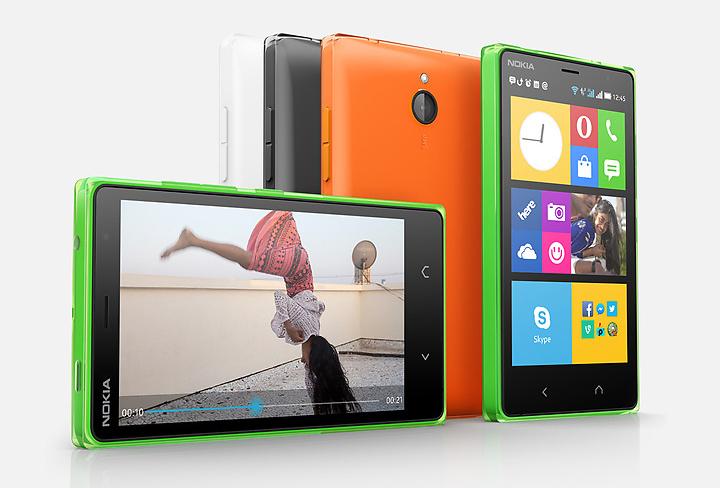
Nokia has announced a new addition to its growing range of Android-based smartphones. It’s called the Nokia X2, and it comes barely five months after the company launched the X range during Mobile World Congress. Like its sister hardware, the X2 runs a custom version of Google’s Android OS, but without any of the Google apps and services installed. Instead, Android looks more like a cross between the software used on Nokia’s Asha phones, and Microsoft’s Windows Phone operating system.
When it comes to specs, the Nokia X2 fits in-between the existing Nokia X and the Nokia XL. It has a 4-inch LCD touchscreen with a 480 x 800 pixel resolution, and is powered by a dual-core, 1.2GHz Snapdragon 200 processor. A 5-megapixel rear camera has been fitted to the phone, along with an LED flash, and there’s a front camera for selfies and video calls.
While the open source version of Android is the X2’s operating system, it looks nothing like you’d expect. The main home screen is a more basic version of Windows Phone, and to spice it up, Nokia has added the Fast Lane – seen previously on its Asha hardware – which helps make operation easier. Fast Lane is accessed with a sideways swipe, and shows a list of recently used apps, notifications, and quick access links to often used programs.
The Nokia Store is installed, along with a selection of Microsoft apps such as OneNote, Skype, OneDrive, and Outlook. It’s possible to download and install Android apps from third-party stores such as Yandex, but don’t expect Google Play to work. Additionally, Nokia has added social apps from Facebook, Line, and Path as standard, plus its MixRadio service along with Here Maps.
Nokia hasn’t confirmed where it will launch the X2 yet, saying only that it’ll be coming to selected countries very soon. It’ll be sold in a few bright colors, and will cost a mere 100 euros or about $136.
Editors' Recommendations
- One of our favorite Android phones just got its own iMessage app
- The Nothing Phone 2 just leaked, and it’s not what I expected
- We have the Vivo X90 Pro, one of 2023’s most interesting Android phones
- Microsoft’s Surface Duo gets a Windows-style refresh with Android 12L
- Garmin’s new D2 Air X10 adds voice controls for $550




